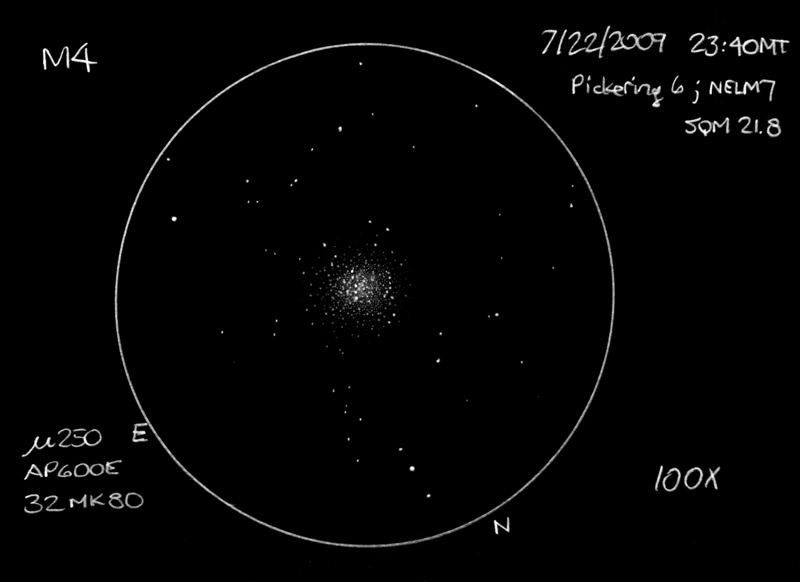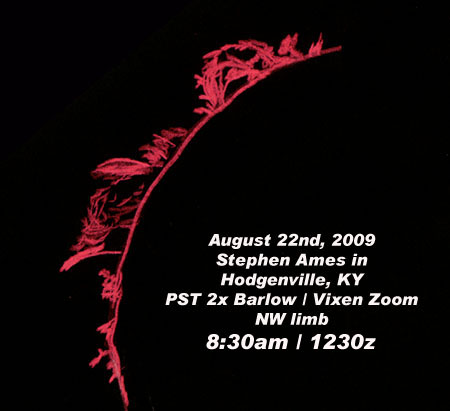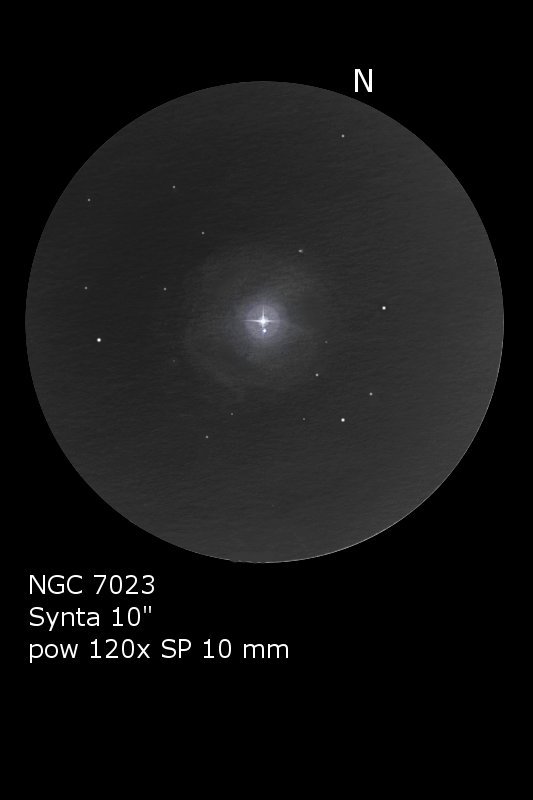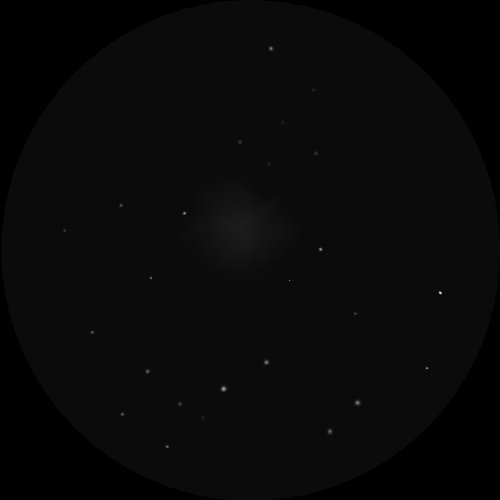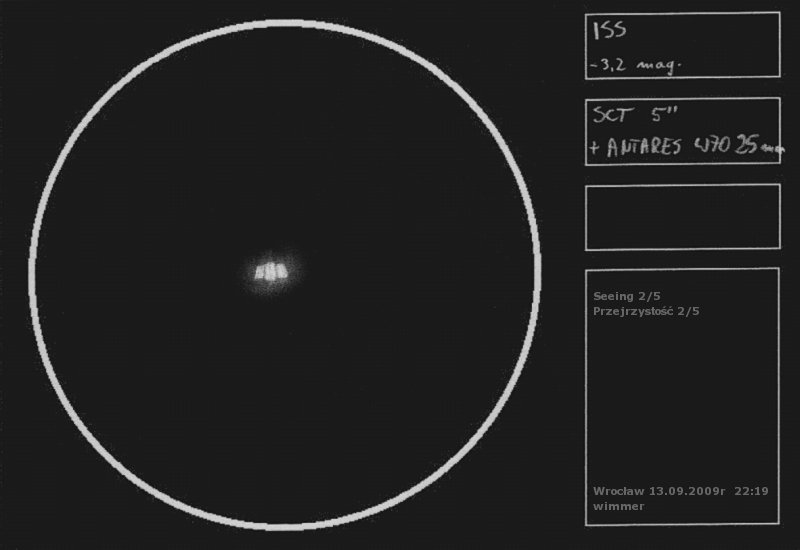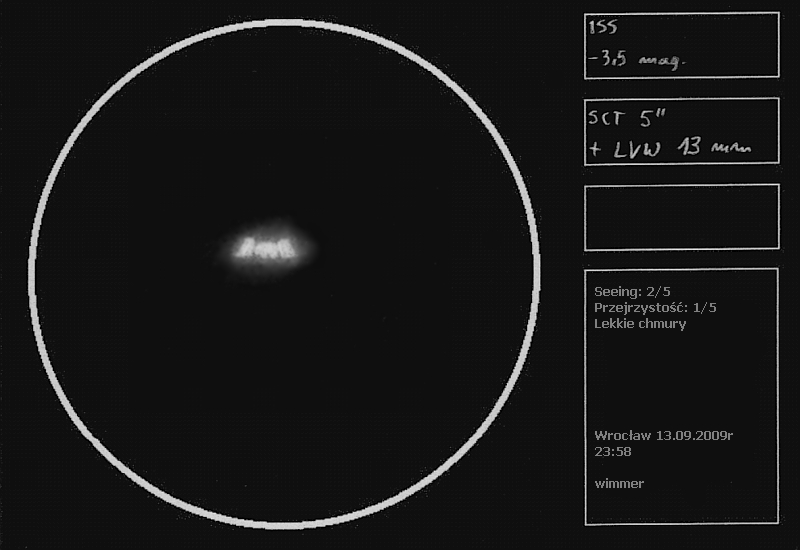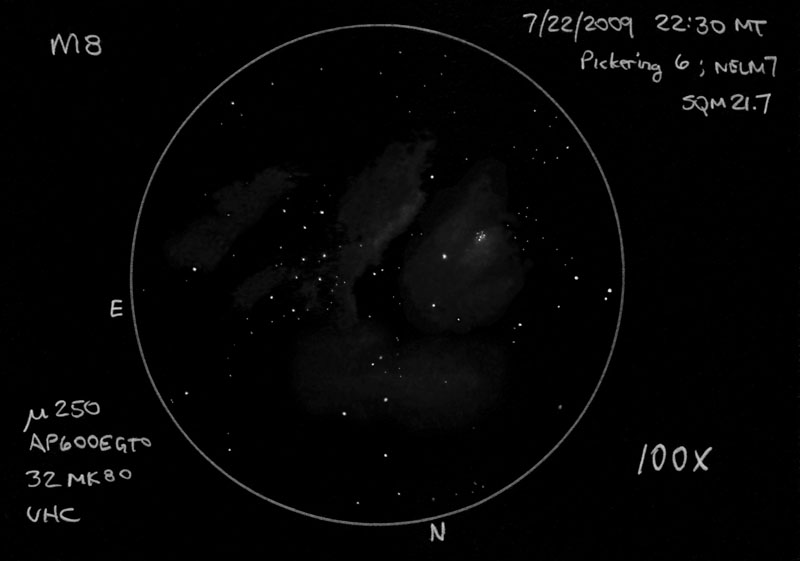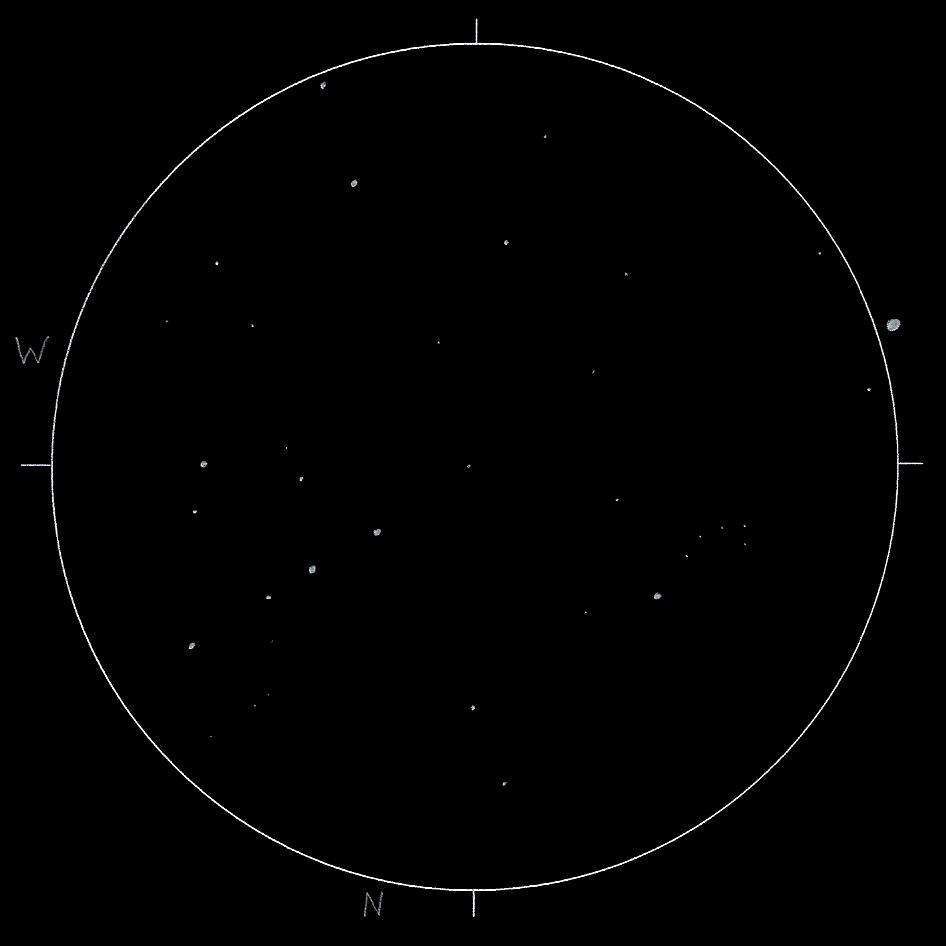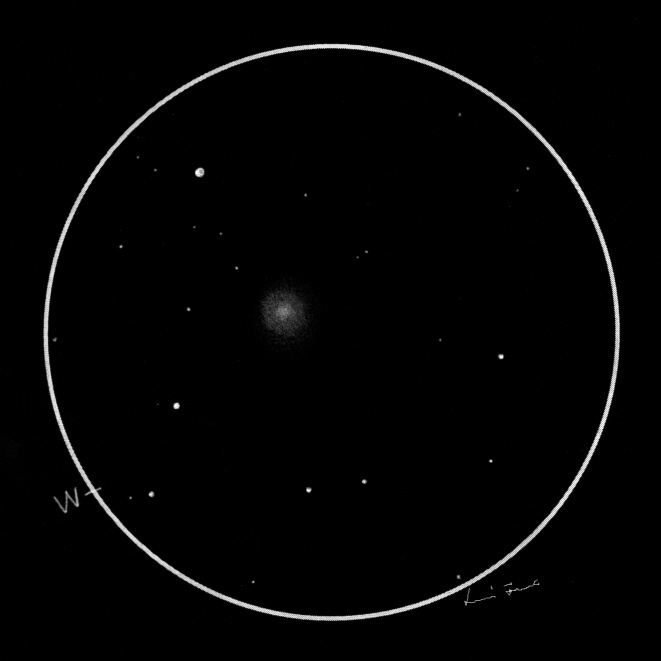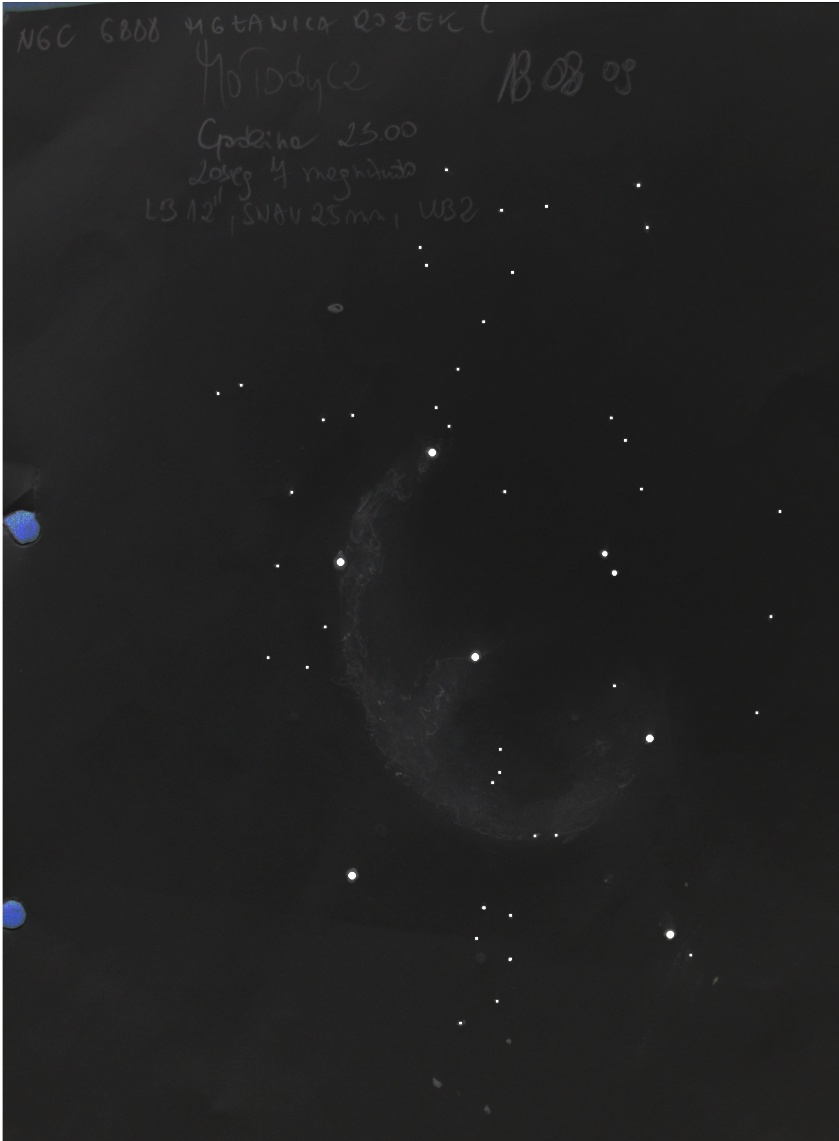
NGC 6888, The Crescent Nebula
Sketch and Details by Robert Twarogal (Ignisdei)
Yesterday I have seen the perfect sky- almost ideal
A small village( eastern Poland) , Molodycz complete isolated from the
LP and surrounded by dense forests, hole dark as coal :),
unfortunately there was a damp meadow (“Newtons” soon became wet )
Range was about 7 magnitude
What happened that moment in the sky was a spectacular experience.
Incredible depth of stars of the Milky Way. I made my first
approach to sketch the Crescent Nebula. Is was visible even in finder Soligor 8*50.
I spent over 45 minutes in enucleateing subtle details of the fibers.
Many of them was such an alchemy of looking, Next day I compared it
with a photograph, I was surprised – some of them I added and a lot of
them left – the result of the seeing fluctuations and my perception.
I have used the LB 12 “, ultrablock 2″ and SWAN 25mm. Believe me I’ve
seen everything in the image ,recording step bay step.
If You have got a dark skies I encourage You to observe Crescent – it
is really worth doing.
Edition in Gimp: improving the centers of stars (only the white dot),
turning the color in negative,and the compensation levels for curves.
Great regards Robert (Ignisdei)
Sketch details:
Object Name : NGC 6888, The Crescent Nebula
Object Type: Nebulae/emission/reflection
Location: Poland/ eastern Poland , Molodycz
Date: 18.08.2009 y,
Equipment: Meade Light Bridge 12″, Ultrablock 2” and SWAN 25mm.
Object: – Artist: Robert Twarogal (Ignisdei)
